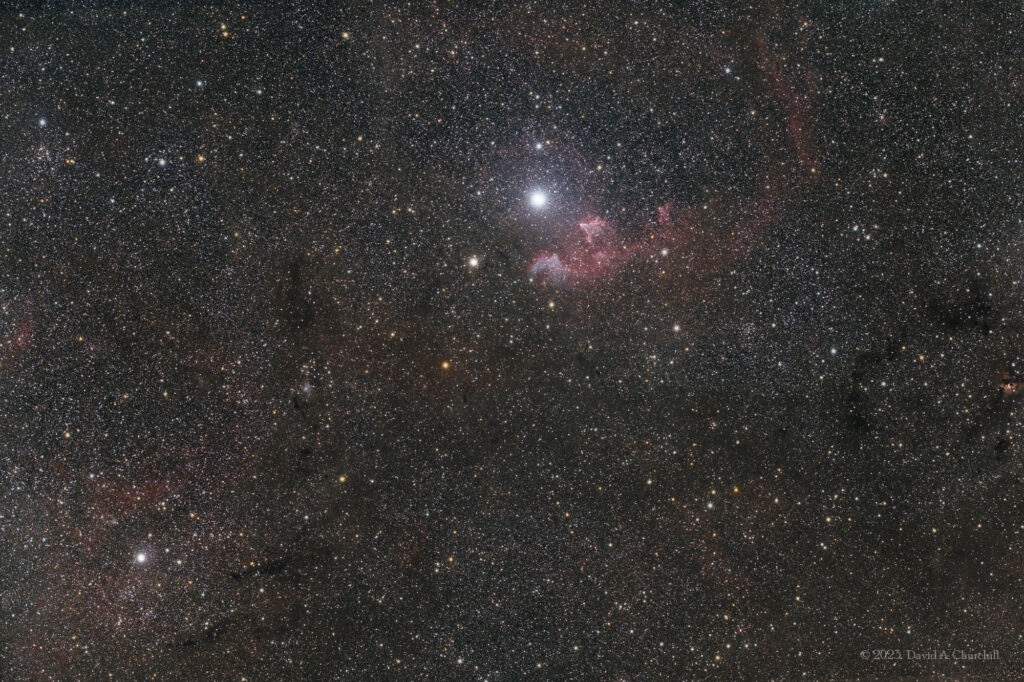IC 59 & IC63 Region
Reflection & Emission Nebulae, Cassiopeia
October 2023. Cave Creek Canyon Observatory, Arizona Sky Village
- Description
- Technical
- Links
IC 59 and IC 63 are faint reflection and emission nebula located in the northern constellation of Cassiopeia. They are challenging objects to spot with telescopes for a number of reasons. Both nebulae are faint at apparent mag. +10, they have extremely low surface brightness and surround bright variable star gamma Cas (γ Cas). This remarkable star is partly unstable and is known as a “shell star”. It currently shines at mag. +2.15, making it the brightest star in Cassiopeia.
IC 59 and IC 63 are 610 light-years distant. From our perspective, IC 59 is located on the northern side of gamma Cas and IC 63 to the northeast. Spatially the nebulae are roughly 3 light-years from gamma Cas, although IC 63 is slightly closer to the star. As a result, it’s appears mostly red due to a dominance of H-alpha emission, whereas IC 59 exhibits much less H-alpha emission and appears mostly blue due to dust reflected starlight.
IC 59 and IC 63 are 610 light-years distant. From our perspective, IC 59 is located on the northern side of gamma Cas and IC 63 to the northeast. Spatially the nebulae are roughly 3 light-years from gamma Cas, although IC 63 is slightly closer to the star. As a result, it’s appears mostly red due to a dominance of H-alpha emission, whereas IC 59 exhibits much less H-alpha emission and appears mostly blue due to dust reflected starlight.
Telescope: Askar FRA300pro f5
Mount: Astro Physics Mach-1
Camera: ZWO ASI6200MC pro
Guider: ZWO Off-Axis-Guider / ZWO120MM Mini
Filters: Optolong UV/IR Cut Filter (Luminance)
Lum: 120×5 mins = 600 mins
Total Imaging Time: 10h 00m
Data Imaged remotely on 2 nights during October 2023.
Data acquisition & Processing by David Churchill.
None


